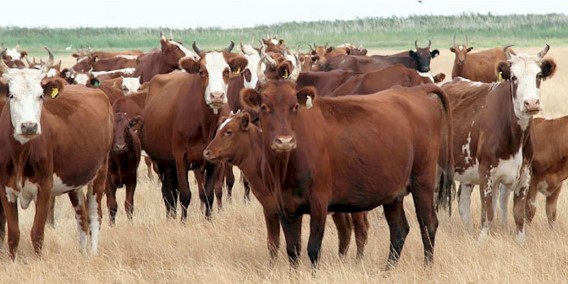Kalmyk cattle are related to ancient Asian cattle. They were
brought to the Caspian steppes in the 17th century by Kalmyks (Mongols in
Russia whose ancestors migrated from Dzungaria in 1607). Kalmyk cows were influenced
by the sharply continental climate, with year-round pasture content. They were
bred for high meat productivity, good early maturity, and exceptional
adaptability in conditions of dry steppes.
They have an exceptionally strong constitution; have an
outstanding ability to obtain fodder from the snow on winter pastures, and
reproductive ability in extreme conditions of keeping and feeding.
Kalmyk cows are able to accumulate 50-60 kg of internal fat
for pasture season, which is used to maintain life in the absence of feed in
the winter. In addition to the internal, they accumulate deposits of
intermuscular, intramuscular, and subcutaneous fat.
